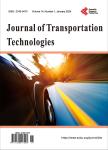How to Detect and Remove Temporal Autocorrelation in Vehicular Crash Data
How to Detect and Remove Temporal Autocorrelation in Vehicular Crash Data作者机构:University of Missouri-Columbia MO USA
出 版 物:《Journal of Transportation Technologies》 (交通科技期刊(英文))
年 卷 期:2017年第7卷第2期
页 面:133-147页
学科分类:1002[医学-临床医学] 100214[医学-肿瘤学] 10[医学]
主 题:Serial Correlation Durbin-Watson Breusch-Godfrey Ljung-Box Differencing Cochrane-Orcutt
摘 要:Temporal autocorrelation (also called serial correlation) refers to the relationship between successive values (i.e. lags) of the same variable. Although it has long been a major concern in time series models, however, in-depth treatments of temporal autocorrelation in modeling vehicle crash data are lacking. This paper presents several test statistics to detect the amount of temporal autocorrelation and its level of significance in crash data. The tests employed are: 1) the Durbin-Watson (DW);2) the Breusch-Godfrey (LM);and 3) the Ljung-Box Q (LBQ). When temporal autocorrelation is statistically significant in crash data, it could adversely bias the parameter estimates. As such, if present, temporal autocorrelation should be removed prior to use the data in crash modeling. Two procedures are presented in this paper to remove the temporal autocorrelation: 1) Differencing;and 2) the Cochrane-Orcutt method.



